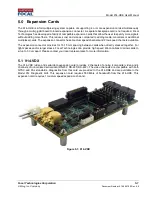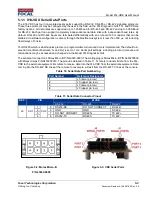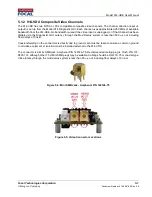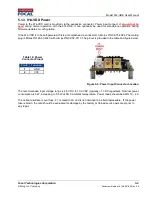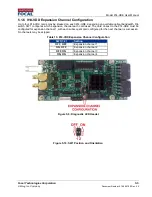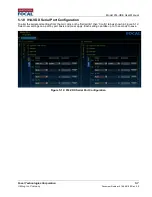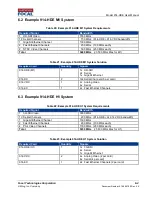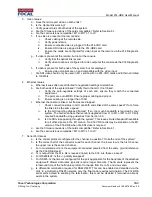
Model 914-HDE User Manual
Focal Technologies Corporation
7-1
A Moog Inc. Company
Document Number: 914-0601-00 Rev. 4.0
Installation and Operation
7.1 Installation
The 914-HDE is intended to be installed in an enclosure with access to conductive cooling, or in an environment
with airflow. 914-HDE is designed to ensure low power consumption and tolerance of wide operating
temperatures. It is, however, up to the system integrators to ensure that adequate cooling is provided to the
unit. In particular, the optical transceiver (J5) must not exceed a case temperature of +85
C and the FPGA,
U5, should not exceed a junction temperature of +100
C as reported by the diagnostic GUI. To accomplish
this, it is recommended to provide direct conductive cooling to both of these parts (J5 and U5), as well as to the
four mounting holes. Recommended mounting hardware is #2-56 type. Ensure any mating hardware (standoffs,
nuts, washers) are fully clear of any onboard parts, solder joints, and electrical traces. Thermally conductive
hardware is recommended for mounting the card stacks.
Stacking height for expansion cards is 16.00 mm to 17.22 mm
. Nominal height should be 16.15 mm (0.636”) to
take into account component tolerances. A 4.00 mm (minimum) standoff should be used under the 914-HDE to
ensure bottom side components have sufficient clearance. Thermal gap material should be used under the 914-
HDE to further extract heat from the card.
Figure 7-1: 914-HDE Dimensions
When mounting, disassembling, or reassembling the 914-HDE (and stack), ensure that no fibers are subjected
to bends in excess of those held by the natural routing of the fibers. The minimum bend radius of the fibers
should be no less than 25 mm, though single partial bends may be less than this
– as low as 15 mm – without
damaging the fiber. Allowable long term values for bend radius are dependent on the fiber type and
environment. Avoid even temporary bends with a radius less than 15 mm, which may affect the long-term
reliability of the fiber.
To ensure that the system maintains link and reliability through high shock and/or vibration environments, it is
recommended to secure the fiber LC connectors in the transceiver bushings using MIL-A-46146 equivalent
RTV, such as Dow Corning 3145 clear RTV. RTV may also be applied to power and data connectors, if required.


